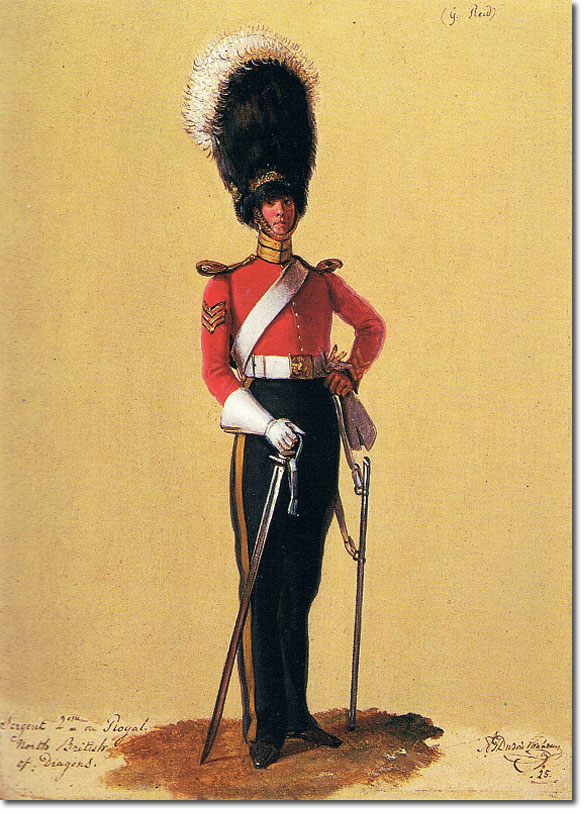|
|


|
| The artist Dubois Drahonet had a tendency to exaggerate so that all his figures seem tall and elegant. The bearskin headdress of the three Scots Greys figures all seem very tall but this is the impression they wanted to achieve, that the men of the heavy cavalry regiments were imposing and formidable men. They also had to compete with the household cavalry who at this time adopted the bearskin cap. The sergeant has gold lace on his collar and cuffs whereas other ranks had yellow lace. Where the officers had epaulettes the other ranks had shoulder scales with brass crescents. The plain front to the coatee was instituted in 1827 and in the same year moustaches were forbidden in regiments other that hussars and the Household Cavalry. Gauntlets were reintroduced in 1828 and the men's coatees which were formerly red were now scarlet like the officers'. The sergeant in this painting has no carbine and his pouch-belt appears to have no provision for attaching the firearm. Sergeants of other heavy cavalry regiments, like the Inniskilling Dragoons are shown with carbines but perhaps the Greys were different. |
Armed Forces | Art and Culture | Articles | Biographies | Colonies | Discussion | Glossary | Home | Library | Links | Map Room | Sources and Media | Science and Technology | Search | Student Zone | Timelines | TV & Film | Wargames